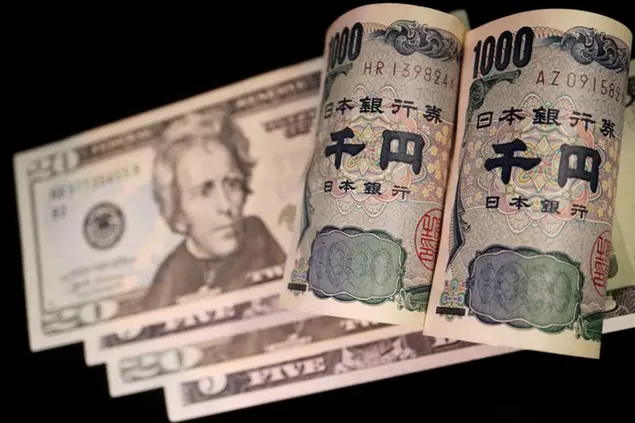PHOTO
SINGAPORE - The dollar held to tight ranges on Monday while the yen pared its safe-haven gains, as investors were undecided on the scale of a Federal Reserve rate cut expected later this month and looked to this week's U.S. inflation reading for more clues.
In China, data showed consumer prices accelerated in August to the fastest pace in half a year but producer price deflation worsened, with a still sputtering economy weighing on the yuan in the Asian session.
The onshore yuan was last 0.27% weaker at 7.1088 per dollar, while its offshore counterpart eased 0.2% to 7.1092.
Currencies elsewhere struggled for direction after Friday's highly anticipated U.S. jobs data failed to offer clarity to traders on the question of whether the Fed would deliver a regular 25-basis-point rate cut or an outsized 50 bp one at its policy meeting next week.
While employment increased less than expected in August, the jobless rate ticked lower and wage growth remained solid, indicating that the U.S. labour market was cooling, but not at a pace that warranted panic over the economy's growth outlook.
The yen surrendered some of its gains after having risen 2.73% last week as risk aversion gripped markets and in the wake of some volatility following the nonfarm payrolls report.
It was last 0.36% lower at 142.81 per dollar. The market brushed off data from earlier in the session which showed Japan's economy expanded in April-June at a slightly slower pace than initially reported, largely due to downward revisions in corporate and personal spending.
The euro slipped 0.04% to $1.1081, while sterling advanced 0.04% to $1.3135.
Against a basket of currencies, the dollar edged up 0.04% to 101.24.
"The Fed finds itself at a crossroads," said Boris Kovacevic, global macro strategist at Convera. "With mixed signals from the job market, they're unlikely to commit to either a 25 or 50 bp cut just yet."
Fed policymakers on Friday signalled they are ready to kick off a series of interest rate cuts at the central bank's upcoming meeting on Sept. 17-18, noting a cooling in the labour market that could accelerate into something more dire in the absence of a policy shift.
Futures show a 35% chance that the Fed could ease rates by half a percentage point next week, with Wednesday's U.S. inflation report the next main economic indicator that could alter market pricing.
"While more substantial cuts through year-end are possible should data deteriorate, our baseline remains for a 25 bps rate cut in September, with easing at this pace also likely to occur in November and December," said David Doyle, head of economics at Macquarie.
In other currencies, the Australian dollar advanced 0.19% to $0.6683, after having fallen more than 1% and touching a roughly three-week low on Friday.
The New Zealand dollar gained 0.13% to $0.6183, rebounding slightly from Friday's two-week trough.
(Reporting by Rae Wee; Editing by Shri Navaratnam and Jacqueline Wong)
